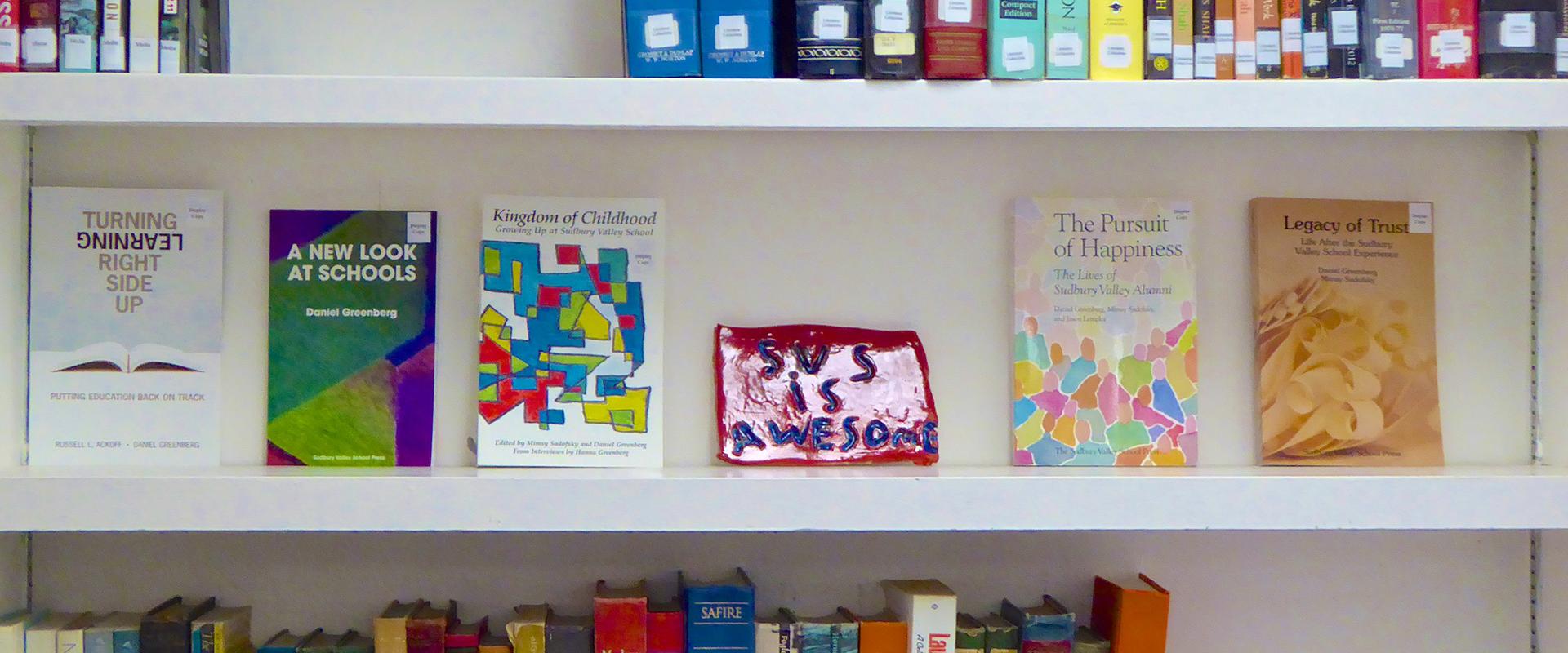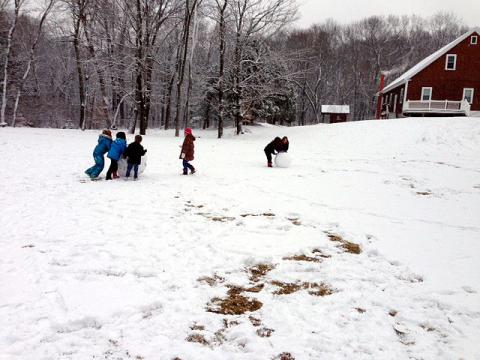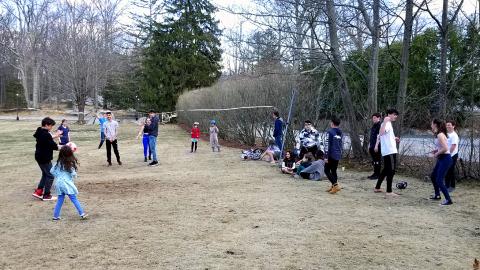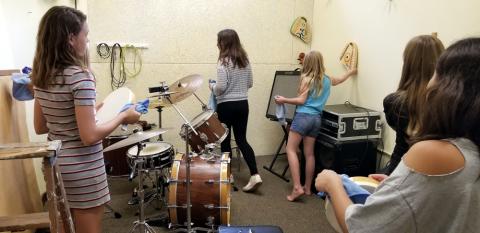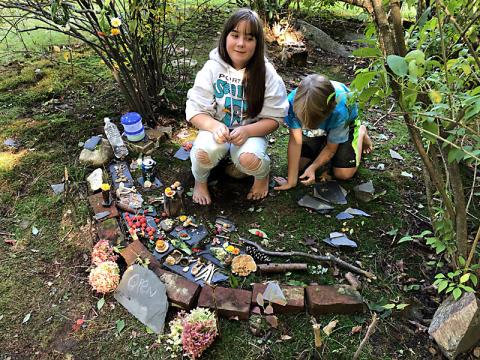One of the criticisms I hear from time to time about Sudbury Valley School is along the lines of, “Well, doing what you want all day and making democratic decisions about the way your community is run, that's all well and good, but when they get out in the real world and they find out how things really are, they're going to be pretty disillusioned.” It gets me thinking about “the real world”, and how you educate people for it – what that would mean.
Obviously, once upon a time, there was no concept of “real world education”. You just got your real world education from the real world! People lived in relatively small communities in an agrarian economy, and they grew up watching people do everything needed in order to survive. Little kids would start off by “playing” at things they saw the adults doing and then, little by little, they would get put to work, and they would learn the skills that they needed at that point. They would also see how everything was integrated into some sort of a seamless whole – for example, why you needed to do this task at this time and this other task at another time. And they also understood how things could go wrong if you didn't do things the way that you were supposed to. All that worked very well throughout history, in all cultural settings everywhere.
Somewhere around the middle of the 19th century, the economy began to change and a new kind of work came into being: running a machine in a big industrial factory. The traditional skills were not the kind of skills that people needed in order to operate an industrial economy. So people started thinking about how they could take naturally self-directed kids and adapt them to be able to function in an environment where they were doing a particular, narrowly focused, repetitive task under highly controlled conditions. And so the traditional public school was born.
The bell would ring in the morning. Everybody would learn that they needed to show up on time, that they needed to get into their place and pay attention doing only what they were told, until the bell rang for lunch. Then they would take the set amount of time that they were allocated for lunch and be back on time and in their place and continue to do their job until they were told to stop. There was no option there to do something different, to mix it up, to switch tasks, to talk to their neighbors, or even ask why they were doing what they were doing. The point was that somebody else had that taken care of and all they needed to do was concentrate on their narrowly focused work.
One might argue that this was fine if that's exactly what you wanted people to do – to focus on some sort of narrow area for a long period of time in a highly controlled environment. But whether or not we want that for our kids, we have to agree that at this time, those opportunities have diminished significantly in our economy. So if we were trying to train kids for the opportunities that they’ll likely encounter in the economy of today, and especially in the future, how do we go about doing that? One of the things that was great about the pre-industrial model, where people learned about the world from actually observing it, was that whatever the world was, it provided them with the opportunity to determine what skills were going to be necessary, and to learn those skills. Today, however, the opportunity to just roam around and watch people doing what they're doing, and figure out how to do it; it's just not there anymore. The way things are set up during the day, kids need to be somewhere safe.
But what if you had a safe environment where kids are free to roam around and learn the things they needed to learn? How would you make sure they could find the things that they needed to learn in order to understand how to function effectively in the world they were going to go out into later on? Well, first of all, you would want them to have the opportunity to interact with the natural world. You'd want to have trees and grass and places to observe nature. You'd want them to have an opportunity to run around and explore how their bodies worked – to run and jump and fall down and skin their knees. You'd want an environment that had a wide range of people – people of all ages, all interacting in a natural way. This would provide the opportunity for people to function in groups, in a social setting, in order to figure out how to get what they want. Then, of course, you’d want the environment to include things that were important to daily life – buildings, for example, or machines. You'd have a place where people could see buildings being maintained and people doing that sort of necessary work and watch that sort of thing happen. You'd want them to be able to learn something about running a business, if they were interested in that.
So how do kids learn about the real world in an environment like Sudbury Valley? The first thing to keep in mind is that it's a ten acre property with trees and grass and a pond and frogs and insects and rocks and mud, and all those other things that make up a natural world, and kids can explore that world to their heart's content. It's also a place where they can run around and experience what it means to move around in a physical human body. A place where kids can ride bikes, ride skateboards, play basketball, build forts in the woods, all that kind of stuff. And beyond that, a place where they can watch as a physical plant is maintained. They can see what's involved with keeping snow out of the way, with keeping the grass cut, with keeping the bushes and trees trimmed, with repairing things that break. Not only can they see this sort of stuff going on, they can see it being planned. They can see how an institution goes about making sure that its physical plant is properly maintained. And going on from there, they can see the institution as a business. They have full access to the way that the accounting system works. They can watch the budget being planned. They can see how trade-offs need to happen regarding how things are spent or where income is going to come in. And perhaps most important of all, they are able to interact with a wide and diverse community, to see how human beings are able, collaboratively, to work out the things that they're going to do.
It turns out that time spent in this sort of an environment actually gives people a pretty clear view of how the real world works. At least that's been our experience here at Sudbury Valley. The school has been around for over 50 years. Kids have gone on into the real world and done pretty much everything anyone does. People become carpenters, plumbers, auto mechanics, doctors, lawyers, engineers, artists, dancers, musicians. Pretty much anything anybody does outside in the real world, kids at Sudbury Valley have learned to do, just by doing what they want all day and working together in a democratic community to figure out how that community is going to be run.
